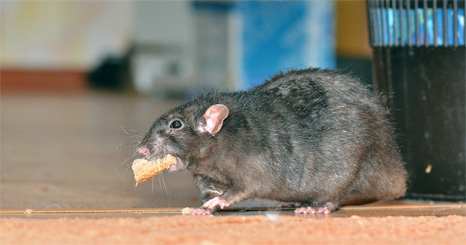Rodent Prevention 101
 You could say that mice and rats are the “perfect” houseguests; they’ll eat (and chew on) just about anything and build their nests wherever you let them. Unfortunately, every year in the US, rodents cause over one billion dollars in structural damage to houses, apartments, offices, and businesses. And because of the environments they travel in, they’re also perfect transmitters of disease. If you’re not excited about sharing your space with mice and rats, there are simple things you can do both inside and outside to rodent-proof your space.
You could say that mice and rats are the “perfect” houseguests; they’ll eat (and chew on) just about anything and build their nests wherever you let them. Unfortunately, every year in the US, rodents cause over one billion dollars in structural damage to houses, apartments, offices, and businesses. And because of the environments they travel in, they’re also perfect transmitters of disease. If you’re not excited about sharing your space with mice and rats, there are simple things you can do both inside and outside to rodent-proof your space.
Step 1: Clean
Mice and rats are creatures of opportunity. If there’s nothing to eat, they’re really not interested in sticking around. Eliminating their food source will force them to relocate. Make sure to:
- promptly clean up food spills and wash dirty dishes
- take out trash and remove clutter (both inside and outside) on a regular basis
- store food (pet & human) in thick plastic or metal containers, when not in use
Step 2: Seal
Now that you’ve cut off their food supply, it’s time to close the doors and make sure they can’t get back in. Mice are able to squeeze through holes the size of a nickel, and rats can get through ones the size of a half dollar, so check closely for gaps or holes inside and outside your home/office building and seal them up. Don’t overlook:
- inside, under, and behind appliances, i.e. fridge, stove, water heater
- around fireplaces and doors
- basement floor drains
- where utilities enter the building, i.e. electrical, plumbing, gas, cable
Step 3: Trap
If they haven’t gotten the hint at this point, there are a number of trapping options to help you evict any stubborn tenants. There are both lethal and live-trap options, depending on your preference. Non-chemical traps, like the Kness Ketch-All® and Snap-E®, allow you to verify your success and use them again-and-again. When setting your traps, be sure to:
- locate feeding, traveling, and nesting paths
- place traps perpendicular to walls, along the rodent’s path
- bait snap traps with peanut butter, bacon, nuts, or dried fruit
It’s worth noting that rodents are very cautious of new things placed in their environment. Putting out baited un-set traps for a couple of days will allow mice and rats time to inspect and get used to them. On the third day, re-bait and set the trap.